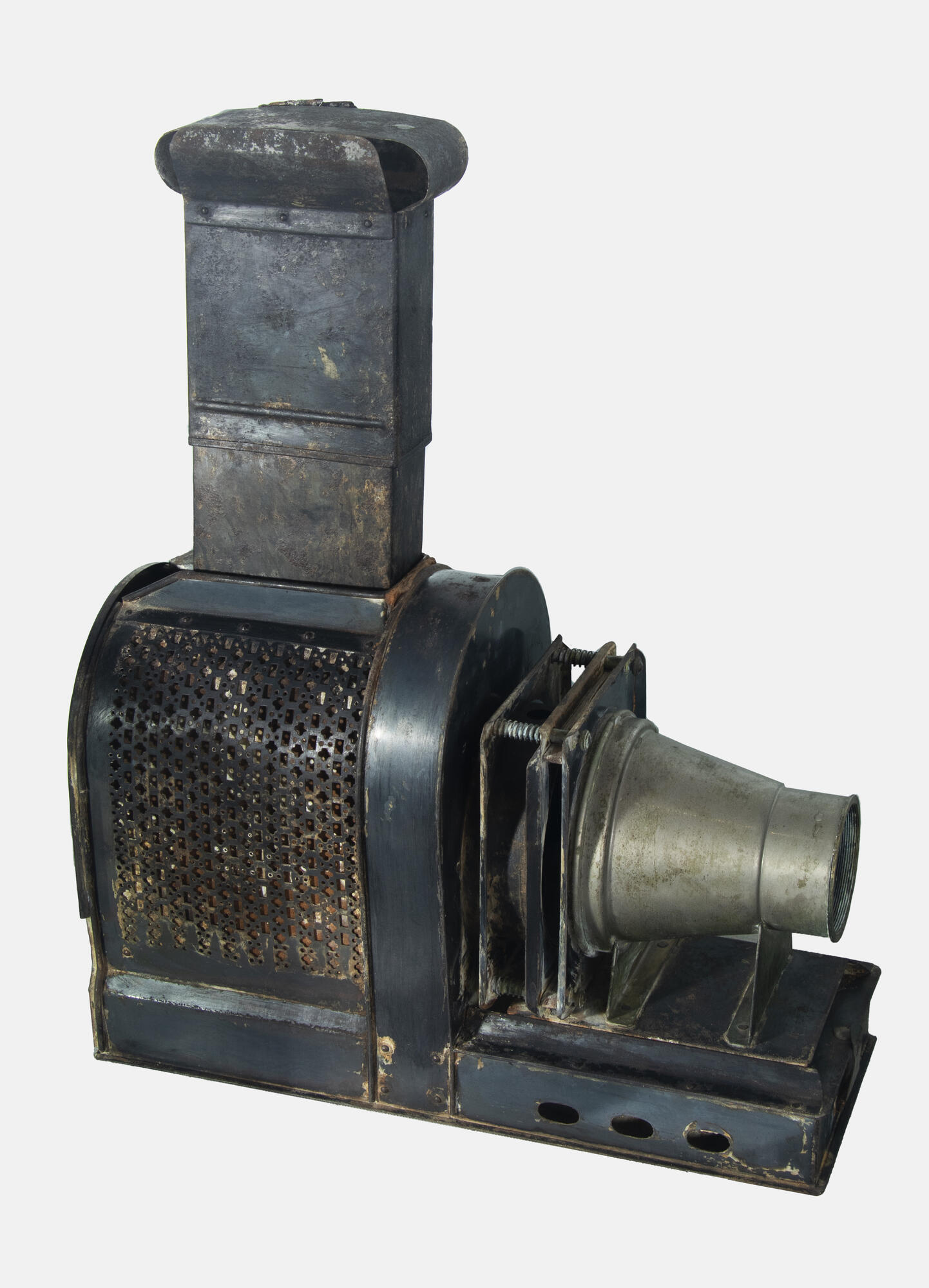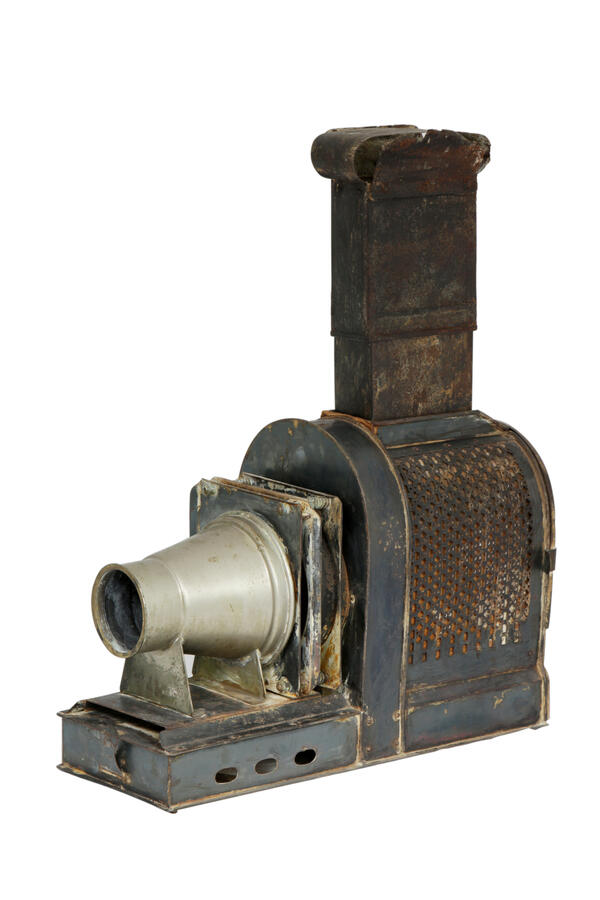The magic lantern is an early type of image projector. It was one of those devices that expanded the view of the world, both for entertainment and educational purposes. Scientists employed magic lanterns to show illustrations during a lecture; families spent many pleasant evenings using the device for reading with pictures, and at fairs, roving lanternists put on exciting performances, scaring and entertaining the crowd.
The magic lantern was invented in the middle of the 17th century. The invention is attributed to the Dutch scientist Christiaan Huygens. The lantern was widely distributed in the 19th century. It gradually evolved from a simple wooden box with a candle as a source of light, to intricately decorated lanterns with an oil lamp and later powered by electricity. With the development of optics, the quality of the lenses improved. Performances were usually accompanied by reading, music, and sometimes light effects. Some devices could even create the illusion of motion, making the magic lantern a direct ancestor of cinematography. At the turn of the 20th century, the rise of cinematography put an end to the popularity of magic lanterns.
A magic lantern used pictures on glass plates. Originally, they were drawn by hand. This work required the artist’s exceptional skill and precision, as any mistake, albeit indiscernible in a small format, became quite noticeable when projected on the screen. The use of photographic pictures made the technology more widespread and accessible. Pictures were created both as separate pieces and in series. They were set in paper, wooden or metal frames. The subject could be anything: illustrations for fairy tales, novels, religious and scientific books, as well as photographs from travels, letters and numerals for children, and reproductions of works of art.
There were workshops that specialized in creating “magical” images. Oftentimes, the pictures were made in photo studios. The Russian Museum of Photography has preserved a series of magic lantern pictures made in Karelin’s workshop inspired by the plot of Aleksey Konstantinovich Tolstoy’s novel “Prince Serebrenni”.


